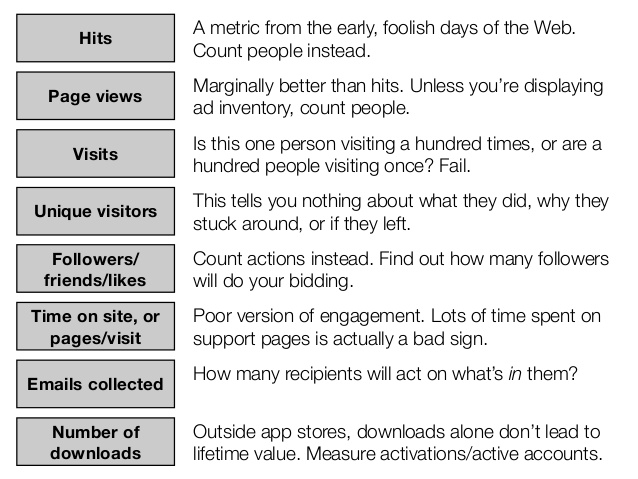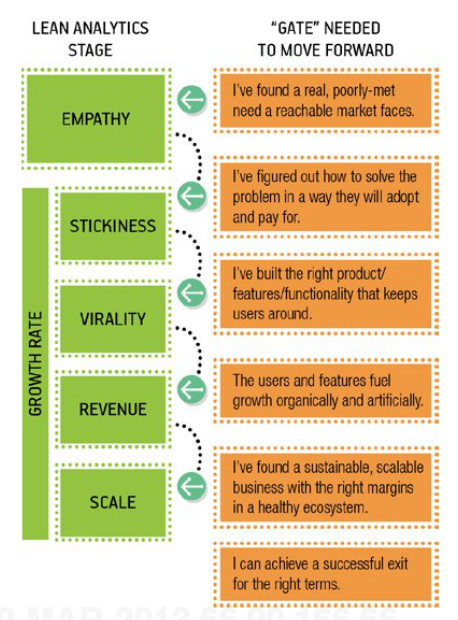Imagine being able to make the right decisions for your business without relying on your intuition.
This can be your reality.
If you know how to pay attention to the right metrics, you can use a numbers-based approach to guide your actions, increase your revenue, and make a mark in your niche.
Is More Data Better?
Most businesses are at least familiar with the importance of using metrics to become more successful online.
So they fire up Google Analytics or another analytics platform. They take a look at the mountain of data that’s available to them, throw their hands in the air, and promise themselves they’ll sort it out later.
With all the different data points to review—even on basic analytics platforms—it’s understandable for people to feel overwhelmed. They don’t have the time to become a technical genius just to understand their analytics report; they have to focus on running and growing their business.
How to Make Sense of Your Analytics Data
The sheer amount of analytics data available to you can get overwhelming pretty fast, but there’s a silver lining: most of it is useless.
You read that right. The vast majority of your analytics data doesn’t give you the actionable insights you need to improve your business.
So you don’t have to become a technical genius to profit from your analytics data. The key is finding out how to ignore the distractions and focusing on the numbers that tell you what you need to know.
Here’s how to do it:
Step 1: Stop Worrying about Vanity Metrics
The metrics most businesses cherish—things like hits on their website, page views, and the number of followers they have on Facebook—are usually the most useless ones.
It makes an online business owner feel good to talk about their 20,000 followers on Twitter. Many of them obsess over traffic stats or Alexa ranks. But this boost in self-esteem is pretty much where the benefits end.
These are textbook “vanity metrics.” They’re easy to swallow but impossible to learn from. Take a look at this chart the authors of Lean Analytics put together for a presentation at GROWTalk Montreal:

Say the traffic to your website increased by 30% this month. Great! But that’s a vanity metric. It doesn’t tell you what you did (or didn’t do) that caused your traffic to spike. And if you don’t know what you did to cause the result, you can’t copy your actions to create the result again in the future.
Step 2: Start Worrying about Actionable Metrics
What makes a metric “good?”
The answer lies in the metric’s ability tell you whether you’re moving closer or further away from your business goals. Knowing you have 200 new email subscribers this month is nice, but it doesn’t tell you if those subscribers are doing anything to move you towards your goals.
Actionable metrics go deeper. With email subscribers, they’d focus on what the subscribers are doing after they sign up to your email list. Are they responding to your emails by buying your products? Are they even reading them? Or are they just deleting them on sight?
These are the things that are valuable to know. They give you insights into what you’re doing right, what you’re doing wrong, and different ideas to try next to reach your goals.
Step 3: Identify Which “Stage” Your Business is In
Businesses all follow a certain lifecycle. Regardless of your industry or what you’re selling, every business grows and changes over time. Your ultimate vision might be cracking the Fortune 500, but it might not reflect your current reality.
Is your business mature and looking to add some long-term stability? Or is it like a feisty teenager trying to figure out his or her path in the future?
Check out this chart from the Lean Analytics book illustrating the different phases:

Maybe getting more customers is the most important thing to you now. Maybe it’s increasing member retention. The stage your business is in will determine your most pressing priority.
Step 4: Focus on One Metric at a Time
Once you figure out the most important priority for your business right now, it’s time to pick one metric that will show you whether you’re addressing that priority.
If you have an ecommerce business, for example, your highest priority might be to get more customers from the shopping cart screen to follow through with a purchase. Shopping cart abandonment could be your metric.
Don’t worry too much about what you pick first; your focus metric will change over time.
A lot of businesses (startups in particular) get overwhelmed because they feel like they have to do everything at once. So it’s great to introduce a single focal point, and to not shift from that focal point until you’ve achieved the result you want.
Step 5: Test New Strategies Until Your Metric Improves
The next thing to consider is how to improve the metric you’re focusing on until you get the results you want.
Take some time to jot down potential ideas to improve your performance. There isn’t one way to improve your metric; it could be a combination of things.
Do you know which ideas will work and which will fail? Of course not! But that’s okay; you can take it one step at a time until you find your solution.
The easiest way to test your ideas to improve your metric is a simple A/B test. You change one feature about your webpage, show half of your visitors the original version and the other half the new version, and compare the results. Then you can make the change or discard it, depending on the results.
This approach sets you up for incremental, gradual improvement. Instead of trying to do 100 things at once (and making it impossible to tell what’s helping and what’s hurting) you just keep focused on one thing until you get the result you want.
A Systematic Way to Grow Your Business
Using analytics data is a powerful tool in your arsenal. Making it a lifelong strategy allows its effects to compound over time, which gives you an edge over your competitors.
It’s time to take traffic stats, social media followers, and email subscribers off the pedestal. It’s time to stop worrying about the numbers your competitors are bragging about… numbers that don’t give them the slightest idea how to improve.
Pick one thing you’d like to improve about your business right now, focus on that metric alone, and test different strategies until you get the result you’re looking for. Then you can pick a new metric and repeat the process.
How do you resist the temptation of vanity metrics? Leave a comment below and let us know!







